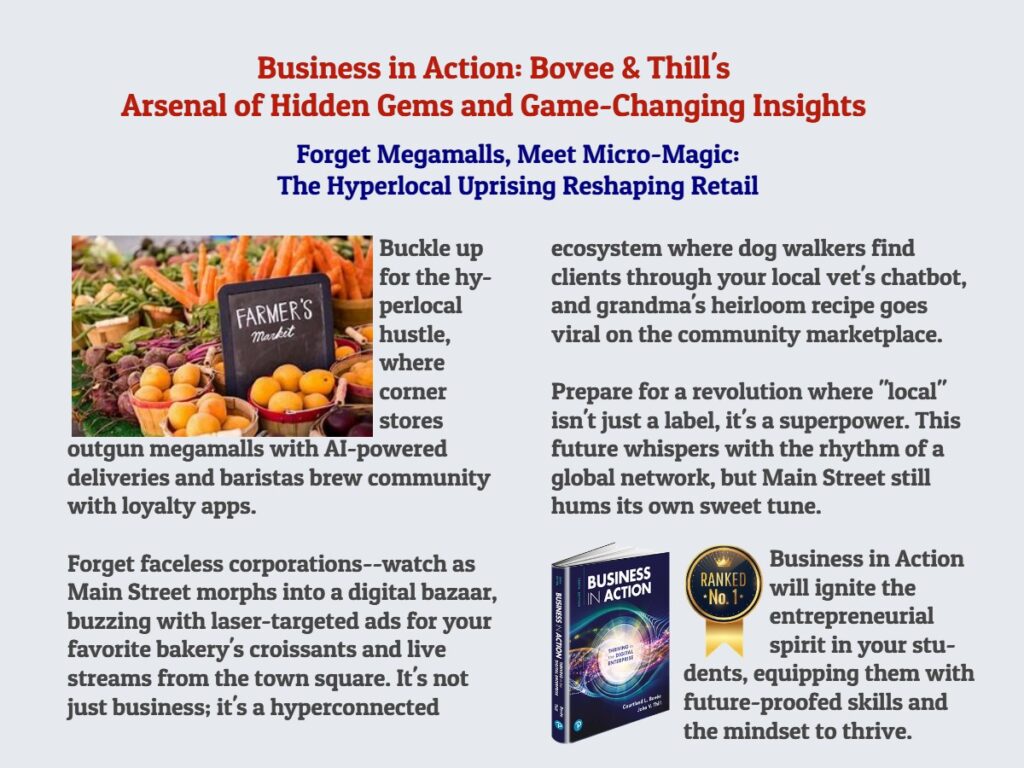
Discussion Questions about the Hyperlocal Hustle Reshaping Retail:
1. How can local businesses leverage the "hyperlocal hustle" to compete with larger chains and online retailers?
Answer:
The hyperlocal hustle presents unique opportunities for local businesses to thrive:
Community focus: Build strong relationships with local customers by understanding their needs and preferences. Offer products and services specifically tailored to the community. Host events and initiatives that foster a sense of belonging.
Direct-to-consumer: Utilize online platforms and social media to connect directly with customers, bypassing middlemen and reducing costs. Offer delivery, pickup, and subscription options for convenience.
Experiential retail: Create a unique and engaging shopping experience that larger chains lack. Offer personalized service, workshops, tastings, or other interactive elements. Highlight the human connection and local stories behind your products.
Partnerships: Collaborate with other local businesses for cross-promotion, joint events, or shared resources. This strengthens the local ecosystem and attracts more customers.
Agility and innovation: Be adaptable to changing trends and customer preferences. Experiment with new ideas and embrace technology to improve efficiency and reach.
2. What are the potential challenges and drawbacks of the hyperlocal hustle for consumers and businesses alike?
Answer:
While the hyperlocal movement holds promise, there are potential challenges to consider:
Limited selection: Smaller stores may not have the same variety of products as larger chains.
Price competition: Local businesses may struggle to compete on price with national brands with economies of scale.
Marketing reach: Reaching a wider audience can be difficult without significant marketing resources.
Technological adoption: Implementing online platforms, delivery systems, and other tech solutions can require investment and expertise.
Consumer trust: Building trust and brand recognition takes time and effort, especially for new businesses.
For consumers, the drawbacks might include:
Higher prices: Supporting local businesses often comes at a premium compared to mass-produced goods.
Limited availability: Certain products or services may not be available locally.
Convenience: Shopping at multiple local stores can be less convenient than a one-stop shop at a larger chain.
Overall, the hyperlocal hustle presents an exciting opportunity for both businesses and consumers, but careful consideration of the challenges is crucial for long-term success.
 Business in Action, 10th Edition
Business in Action, 10th Edition